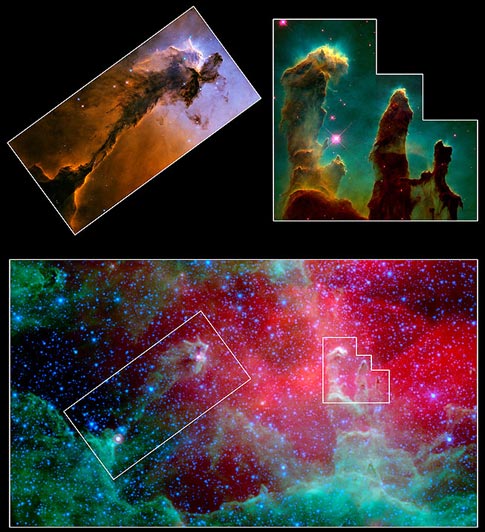A new image from NASA’s heat-sensing Spitzer Space Telescope reveals a cloud of hot dust at the heart of the Eagle Nebula (M16). The dust is so hot, astronomers say, only a stellar explosion could have been responsible.
The explosion’s shock wave may have already destroyed features made famous in a 1995 Hubble Space Telescope image of the nebula. The 20 or so massive stars at M16’s center produce radiation and outflows that carve a hollow out of the nebula’s dense gas and dust. Hubble imaged three dusty columns — dubbed the “pillars of creation” — sculpted by these effects.
“I remember seeing a photograph of these pillars more than a decade ago and being inspired to become an astronomer,” says Nicolas Flagey of the Institut d’Astrophysique Spatiale in Orsay, France. “Now, we have discovered something new about this region we thought we understood so well.” Flagey presented his findings at this week’s American Astronomical Society’s Seattle meeting.
The Eagle Nebula is a star-forming region 7,000 light-years away in Serpens. The European Space Agency’s Infrared Space Observatory first revealed the presence of unusually hot dust in the nebula’s core, but Spitzer’s MIPS instrument detected the dust’s unexpected shell-like structure at a wavelength of 24 microns.
“There is not enough radiation coming from the stars to heat the dust up to the temperature we have measured,” Flagey explains. Only the explosion of a young, massive star within the cluster can account for the hot shell of dust Spitzer detects. He estimates the explosion may have been visible from Earth between 1,000 and 2,000 years ago. “There are two or three observations in Chinese records that may be candidates for this supernova.”










